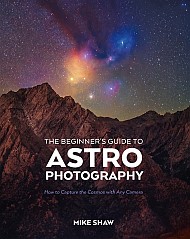Astronomy
Starship Could Cut The Travel Time To Uranus In Half
The ice giants remain some of the most interesting places to explore in the solar system. Uranus in particular has drawn a lot of interest lately, especially after the 2022 Decadal Survey from the National Academies named it as the highest priority destination. But as of now, we still don’t have a fully fleshed out and planned mission ready to go for the multiple launch windows in the 2030s. That might actually be an advantage, though, as a new system coming online might change the overall mission design fundamentally. Starship recently continued its recent string of successful tests, and a new paper presented at the IEEE Aerospace Conference by researchers at MIT looked at how this new, much more capable launch system, could impact the development of the Uranus Orbiter and Probe (UOP) that the Decadal Survey suggested.
This Week's Sky at a Glance, October 17 – 26
After checking out the two binocular comets right after dark this week, catch a double shadow transit on Jupiter and the late-night Orionid meteors.
The post This Week's Sky at a Glance, October 17 – 26 appeared first on Sky & Telescope.
Why Aluminum in Vaccines Is Safe—And Often Essential
The FDA wants to reevaluate the use of aluminum adjuvants despite a long record of safe use in vaccines
How to Stay Safe during RSV Season
Respiratory syncytial virus (RSV) can be life-threatening, but there are new treatments to prevent and treat the disease.
‘Nightmare’ calculation may be too tricky for even quantum computers
‘Nightmare’ calculation may be too tricky for even quantum computers
Replacing sugar with artificial sweetener may help your gut microbiome
Replacing sugar with artificial sweetener may help your gut microbiome
We can use ordinary sugar in the search for dark matter
We can use ordinary sugar in the search for dark matter
Alien Civilizations May Only Be Detectable For A Cosmic Blink Of An Eye
Alien civilizations may evolve so quickly that they are only detectable for a blink of cosmic time, thanks to the rise of artificial intelligence.
Black Hole Eats through Star, Explodes it from Within
The longest-duration burst of gamma rays on record might mark the moment a black hole tunneled through a star and blew it up from within.
The post Black Hole Eats through Star, Explodes it from Within appeared first on Sky & Telescope.
ESA’s Swarm Constellation Sees Growth in the Magnetic Field’s 'Weak Spot'
Earth is a dynamic place, both on its surface and down to its very core. The European Space Agency (ESA) recently released findings from its Swarm constellation of Earth-observing satellites highlighting this fact, documenting activity in the planet’s magnetic field during its decade plus of extended operations. One key finding shows the well-known Southern Atlantic Anomaly is expanding in size.
Week in images: 13-17 October 2025
Week in images: 13-17 October 2025
Discover our week through the lens
We're starting to understand why childhood adversity leaves its mark
We're starting to understand why childhood adversity leaves its mark
Flu Cases Surge Early in Japan, Sparking Global Health Concerns
School closures and hospitalizations from an unexpected early spike in flu cases in Japan has experts concerned about what lies ahead for other countries
How to See Comet Lemmon and the Orionids Meteor Shower Peak
A comet visible to the naked eye will make its closest approach to Earth on October 21
What Is a Quasar? The Answer Depends on Your Point of View
Voracious supermassive black holes light up the cores of “active” galaxies across the universe. How we see them, however, is a matter of perspective


